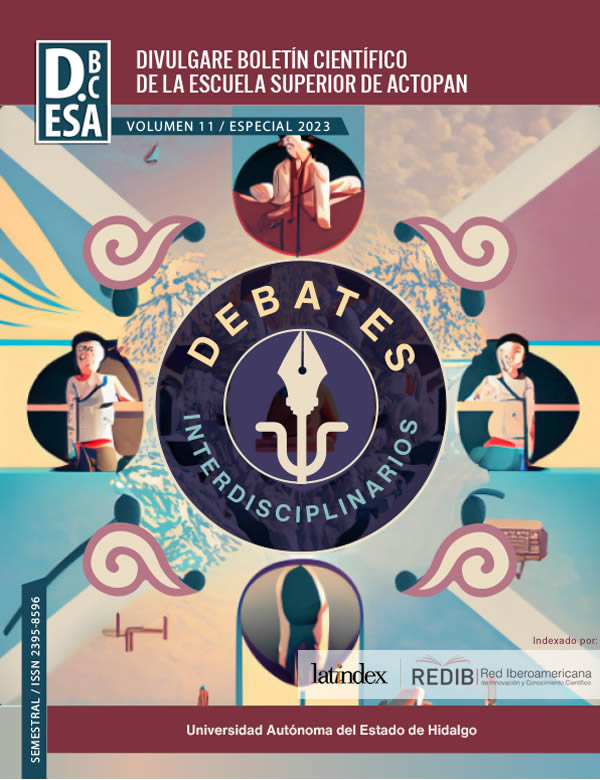Critical analysis of the representation of the femme fatale in the image. An anthropohistorical approach.
Abstract
In this paper we analyze the representation of the femme fatale in the graphic novel Pietrolino (2009), written by Alejandro Jodorowsky and illustrated by Olivier Boiscommun, which corresponds to the stereotype of the femme fatale, simplification of the archetype of the threatening woman. The foregoing, based on the fact that Colombella, a female character in the narrative, presents similarities with the iconography and archetypal symbolism of women who threaten men by transgressing the social conventions of their time, by freely exercising their sexuality and seeking their emancipation and empowerment. We support the use of images to understand the development of visual culture around the stereotype of the femme fatale in Walter Benjamin's proposals, in which he validates the mechanical means of art reproduction as sources for the study of social and cultural phenomena in a specific historical context. To show the anthropohistorical development of these stereotyped images, we will use the analysis of the detail and the fragment, formulated by Omar Calabrese. In addition, through the search for indexical inferences raised by Carlo Ginzburg, we will review elements of Greco-Roman and Middle Eastern mythologies, the medieval painting and literature, Renaissance painting and theatre, nineteenth-century painting and cinema. Finally, this work seeks to show a general semblance of the continuity that the representation of women has had in the image, by presenting her as an enemy of the hegemonic social order for seeking her emancipation and empowerment.
Downloads
References
Alpers, S (1987). El Arte de Describir. El Arte Holandés en el Siglo XVII. Madrid: Hermann Blume.
Bard, C. (2000). Un siglo de antifeminismo: el largo camino de la emancipación de la mujer. Madrid: Biblioteca Nueva.
Benjamin, W. (2003). La obra de arte en la época de su reproductibilidad técnica. México: Ítaca.
(1973). Discursos interrumpidos I. Madrid: Taurus.
Berger, P, Modos de ver, Editorial Gustavo Gili, Barcelona, 1975.
Bornay, E. (2014). Las hijas de Lilith, Madrid: Cátedra
Bozal, V. (ed.). (2002). Historia de las ideas estéticas y de las teorías artísticas contemporáneas, Vol. II. Madrid: La balsa de Medusa.
Burke,P. (1999). El Renacimiento. Barcelona: Crítica.
Burucua, J.E. (2002). Historia, arte y cultura. De Aby Warburg a Carlo Ginzburg. Argentina: Fondo de Cultura Económica.
Cabañas, J. A. (2014). La mujer nocturna del cine mexicano. Representación y narrativas corporales. México: Universidad Iberoamericana.
Calabrese, O. (1989). La era neobarroca, Madrid: Cátedra.
Camacho Morfín, L. (2013). Las armas de Don Quijote. México D.F.: Taller abierto.
Cirlot, Juan – Eduardo. (1992). Diccionario de símbolos. Barcelona: Labor
Cobast, E. (2013). Las 100 palabras de la cultura general. Barcelona: Akal.
Cortés, J. M. (1997). Orden y caos. Un estudio cultural sobre lo monstruoso en las artes, Barcelona: Anagrama.
Del Conde, T. (1994). Cuerpo humano y pintura. En Pérez-Rincón, Héctor (Comp.), Imágenes del cuerpo. México: Fondo de Cultura Económica.
Dorfman, A. & Matterlat, A. (1997). Para leer al pato Donald. Comunicación de masas y colonialismo. México: Siglo Veintiuno.
Echevarría, R. (2014) La divina Comedia del Arte. México: Conaculta/Arte y Escena Ediciones
Farga Mullor, M.R. (2013). Monstruos y prodigios: el universo simbólico desde el Medioevo a la Edad Moderna, Puebla: Universidad Iberoamericana Puebla / Benemerita Universidad Autónoma de Puebla.
Falcón Martínez, C. Fernández Galiano, E. y López Melero, R. (1989). Diccionario de mitología clásica. México: Alianza.
Geertz, C. (2003). La interpretación de las culturas. Barcelona: Gedisa.
Ginzburg, C. (2000). Mitos, emblemas e indicios: Morfología e historia, Barcelona: Gedisa.
Gombrich, E. (2013). La historia del arte. Nueva York: Phaidon.
Grimal, P. (2010). Diccionario de mitología griega y romana. Barcelona: Paidós.
Gubern, R. (1981). El lenguaje de los cómics. Barcelona: Península.
(2002). Máscaras de la ficción, Barcelona: Anagrama.
Jodorowsky, A. & Boiscommun, O. G. (2009). Pietrolino. Barcelona, España: Norma.
Litvak, L. (1979). Erotismo. Fin de Siglo. Barcelona: Antoni Bosch Editor.
Noval Morgan, M. P. (2011). Blonde Venus y el género cinematográfico de la Mujer Caída. Revista Andamios, Vol. 8, núm 17, pp. 345 – 366:Universidad Autónoma de la Ciudad de México.
Saavedra Luna, I. (2016). Cuando el Wastern cruzó la frontera. Un acercamiento transdisciplinario. México: Universidad Autónoma Metropolitana Xochimilco.
Tuñón, J. (1998). Mujeres de Luz y sombra en el cine mexicano. La construcción de una imagen, 1939-1952, México: El colegio de México/Instituto de Investigaciones Estéticas UNAM.
Zubieta, A. M., et al. (2004). Cultura popular y cultura de masas. Conceptos,recorridos y polémicas. Buenos Aires: Paidos.
Zamorano, B., et al. , Fronteras circenses. Antecedentes, desarrollo y arte del circo. Conaculta / Instituto Nacional de Bellas Artes, México, 2012.
Filmografía
Boytler, A. (Dir.). (1994). Mujer de puerto.
Copyright (c) 2023 Eduardo García-Gómez, Iris León-Rendón, Janneth Serna-Mora

This work is licensed under a Creative Commons Attribution-NonCommercial-NoDerivatives 4.0 International License.











